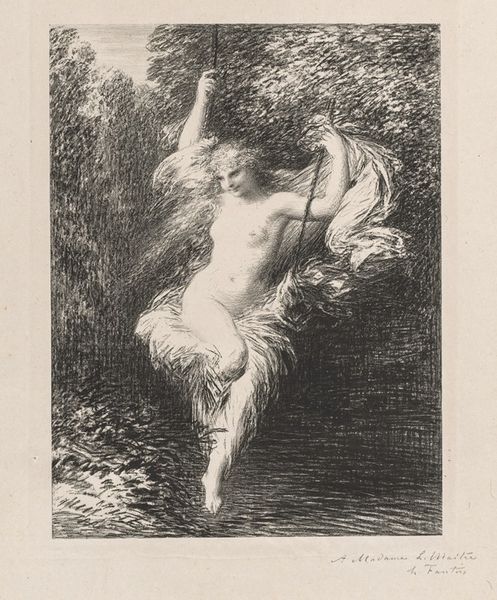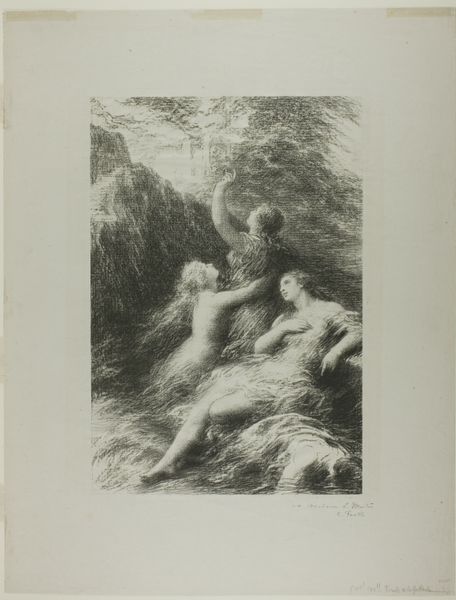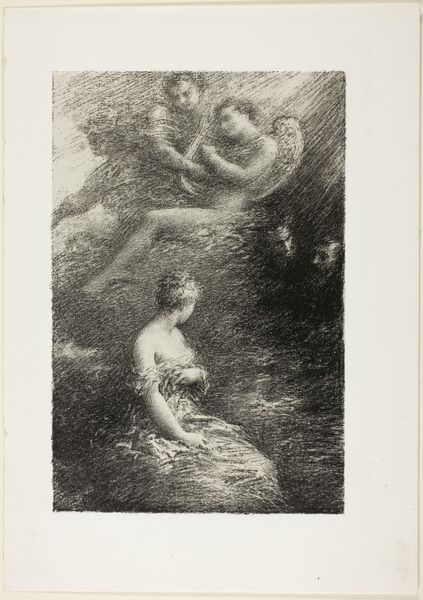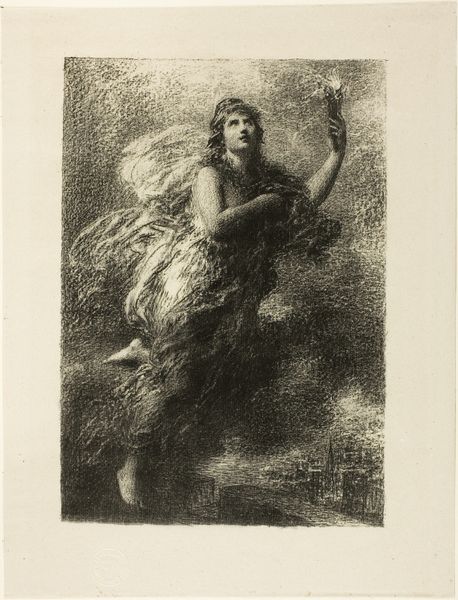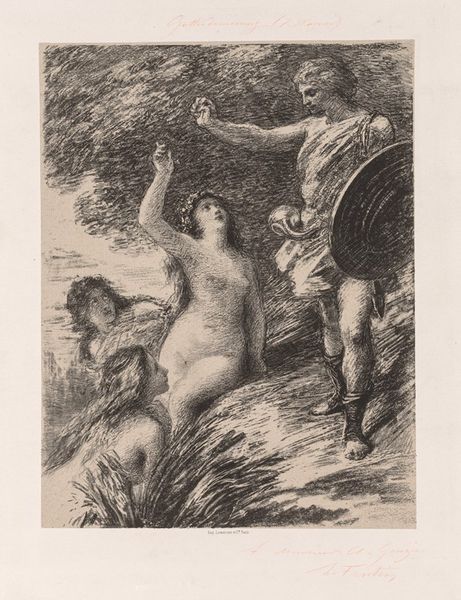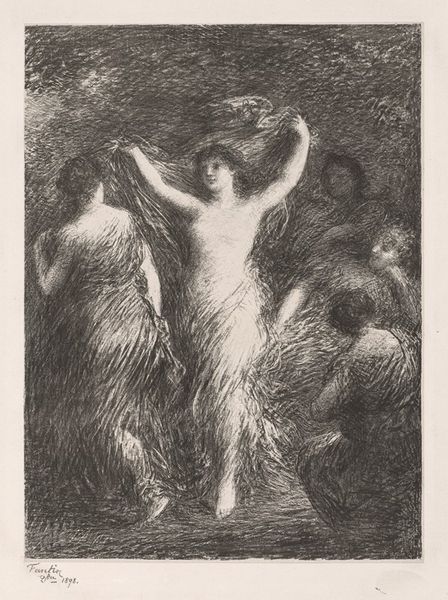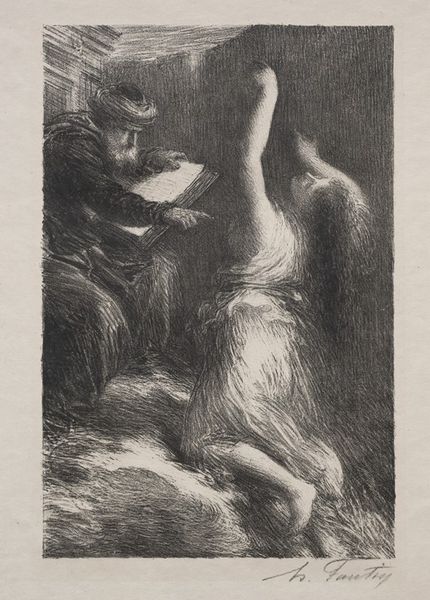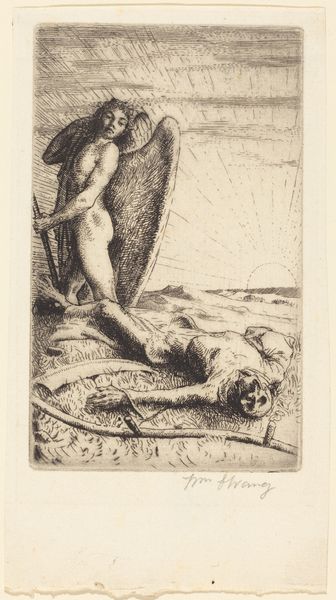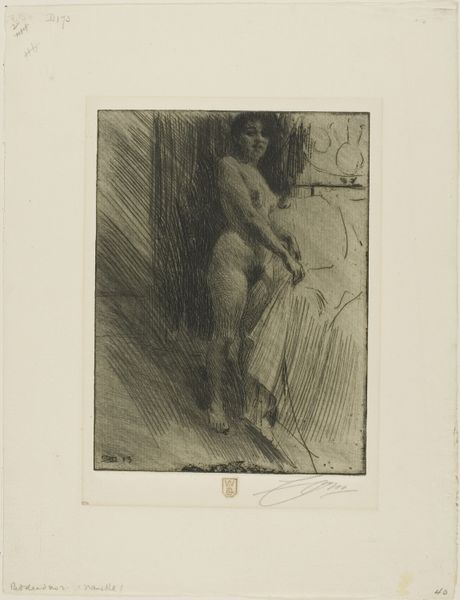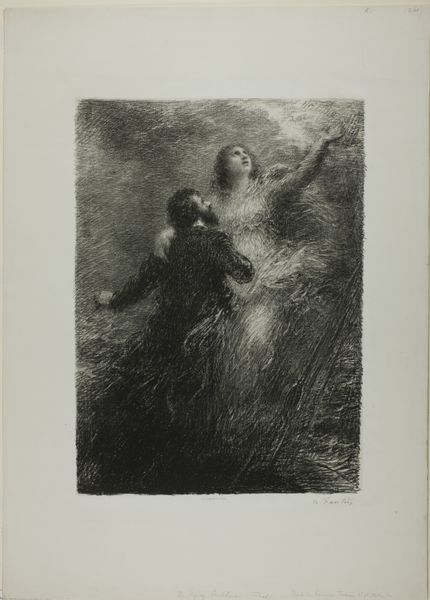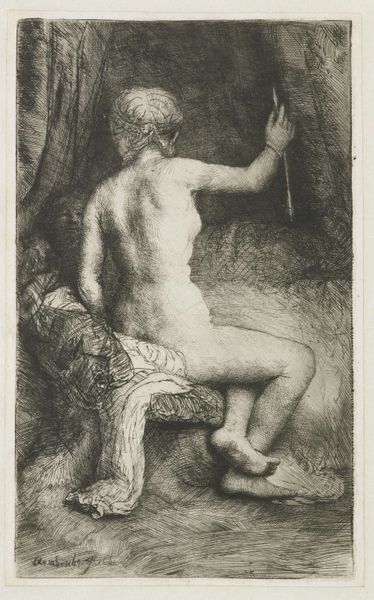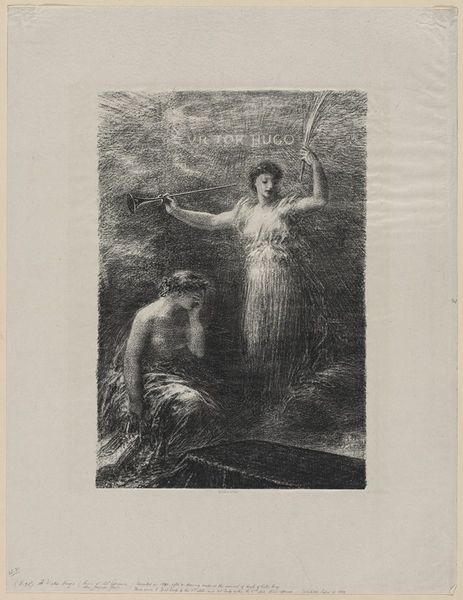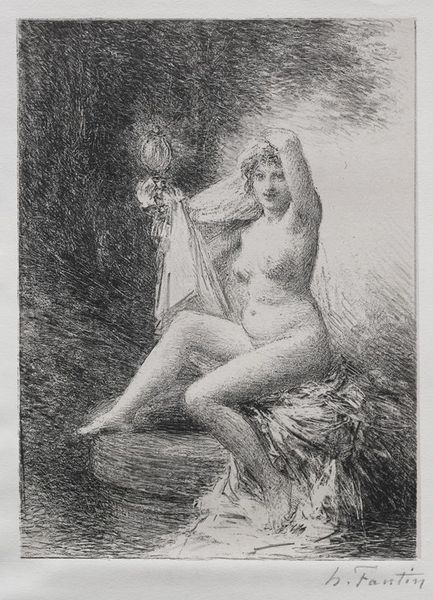
drawing, lithograph, print, paper
#
drawing
#
lithograph
# print
#
figuration
#
paper
#
symbolism
#
nude
Dimensions: 227 × 150 mm (image); 227 × 150 mm (primary support); 316 × 232 mm (secondary support)
Copyright: Public Domain
Curator: Fantin-Latour’s 1886 lithograph, "The Rhinegold: Scene I, The Rhinemaidens," presents a swirling tableau from Wagner’s opera, currently held at The Art Institute of Chicago. It's an excellent example of late 19th-century symbolism. Editor: My first impression is one of ethereal movement. The figures seem almost weightless, suspended in this vortex of dark and light. Is that the water surrounding them or part of their very being? Curator: He certainly blurs the line. The Rhinemaidens are creatures of myth, tied intrinsically to the river itself. The lithographic technique, with its delicate lines and gradations, mirrors that ambiguity perfectly, giving a certain weight to the work, but making it feel equally like a fever dream. Editor: Those flowing lines evoke both the water’s currents and their sensuality. The symbolism here isn’t subtle—we have nude figures, archetypes of feminine allure, in their natural element. Are we meant to see them as a threat? Or simply beings of nature, uncorrupted? Curator: Perhaps both. The late 19th century saw a rise in anxieties around female sexuality, which manifested in art as dangerous sirens and femme fatales. Wagner, and by extension, Fantin-Latour, tapped into this fear, whilst also highlighting the purity, or at least naturalness, of these mythological beings before the corruption by gold. Editor: The image resonates with the ancient myths of sirens and water nymphs – powerful creatures whose allure can be dangerous, but also divine. The Rhinemaidens hold that ambivalence—innocence and knowing seduction, coexisting in this liminal space. Curator: Exactly. By employing mythological figures and evocative compositions, Fantin-Latour critiques the socio-political currents of his time. It seems like through this print he seeks not to judge them, but represent Wagner’s criticism of social issues regarding modernity and capital through mythological themes. Editor: I find it powerful how Fantin-Latour distills Wagner’s complex narrative into this single, haunting image. Curator: Indeed, a powerful commentary on human desire and its potential for corruption, set within the flowing waters of myth.
Comments
No comments
Be the first to comment and join the conversation on the ultimate creative platform.
